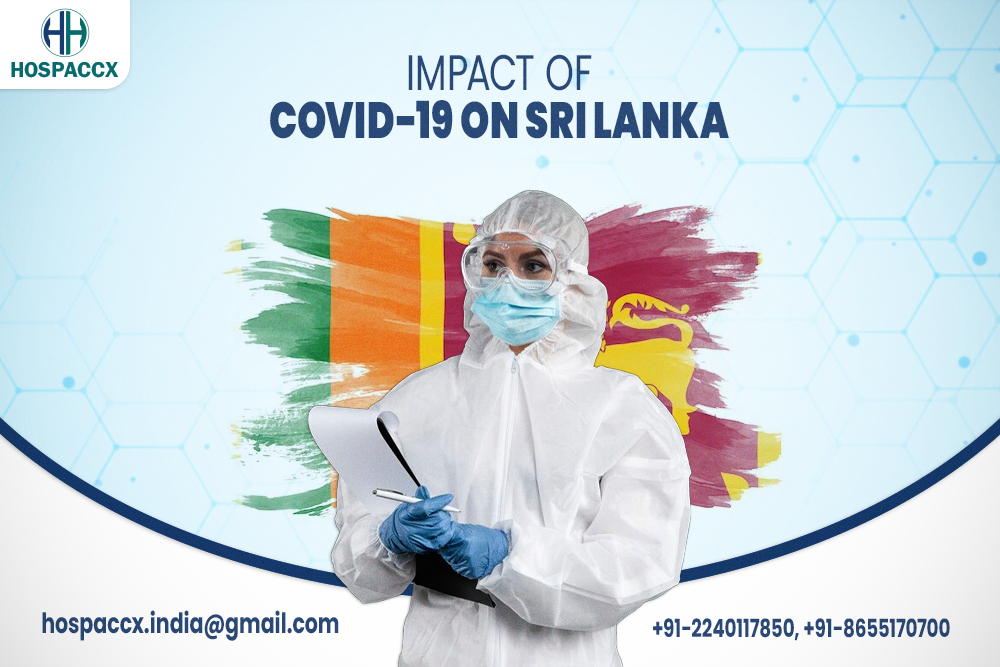Impact of Covid in Sri Lanka
Sri Lanka confirmed its first case of COVID-19 on January 27, 2020, but the first large outbreak did not occur until mid-March in the same year. The government reacted swiftly by closing the airport and halting all inbound and outbound travel. The severity of the pandemic’s economic shock is confirmed by evidence from firms and households, though data are still relatively limited. The Department of Labour conducted an online survey in April 2020 at the height of the first national lockdown and found that more than half of businesses had closed their operations and that almost two thirds of employees were out of work. The impact was severe across most industries, except agriculture (Department of Labour 2020).
Present situation of COVID-19 in Sri Lanka
Government Measures
As of 23 March 2020, forty-five quarantine centres had been built in the country by the Sri Lanka Army as a preventative measure in an attempt to stop the spread of the pandemic. Nearly 3,500 people were placed under quarantine in 45 quarantine centres, including 31 foreigners from 14 countries. As of 25 March 2020, Sri Lankan authorities tracked down over 14,000 people who had come into contact with identified patients, and ordered those people to self-quarantine. As of 16 April 2020, Sri Lanka was named the 16th highest-risk country for contracting the virus. In April 2020, Sri Lanka’s response to the pandemic was ranked as the 9th best in the world. However, it is believed that the COVID-19 cases in the country are underreported by the officials and allegations regarding the manipulation of details regarding the COVID-19 pandemic in the country were also raised.
Impact on Healthcare
Sri Lanka, like many other nations, confronts various hurdles in the fight against COVID-19. The epidemic has created significant uncertainty and posed a massive challenge to the country’s healthcare system. With the fast increase in cases and the appearance of novel varieties, Sri Lanka began to experience medical resource limitations, including hospital beds and medical equipment.
Further, a major challenge to the existing healthcare system is inadequate ICU beds, ventilators, oxygen supplies and other necessities required to care for patients with severe respiratory failure. The availability of ICU capacity plays a crucial role in critical cases, and constant and uninterrupted availability of oxygen supplied beds is needed to avert a disaster. Currently, less than 200 ICU beds are in isolation units for patients with severe COVID-19 symptoms, whereas just around 700 ICU beds are available in the hospital system of the entire country.
Equally, due to capacity constraints and administrative issues, PCR test results are reported to be delayed. In some districts, the delays are said to be longer than one week. Thus, delays in generating test results are a grave concern and represent a major obstacle in the COVID-19 control process. There is a growing need for immediate and accessible healthcare and digital healthcare resources to effectively respond to the challenges posed by COVID-19. However, Sri Lanka’s health information systems are weak and under-funded and the lack of an adequate central health database and IT infrastructure has hampered digital health services.
Impact on Education
The global pandemic has caused large-scale disruption to the continuation of structured in-school education in Sri Lanka for approximately 4.2 million students and 235,000 teachers. The closing of schools for just one day causes a loss of about 25 million learning hours and 1.4 million teaching hours. The extended closure of more than 10,000 schools, 736 Pirivenas and over 100 private schools is likely to adversely impact work done towards the achievement of the SDG educational goals.
The phased approach to school reopenings was in line with the recommendations by the Global Framework for Reopening Schools (UNICEF, UNESCO, WB, WFP and UNHCR). At the same time, the changes made it difficult for schools, teachers, parents and supporting organisations to plan their response activities.
Economic and Social Impact
The pandemic and its containment measures caused the worst contraction in Sri Lanka’s post-independence history, with growth sliding from 3.1% per year in 2018–19 to -3.6% in 2020. The contraction can be attributed to weak performance of the construction, garments, tea and mining sectors; a two-month island-wide lockdown style curfew which stifled the economy; the closure of the international airport which stopped tourism; and weak global demand for exports. But the contraction could be short-lived. The economy picked up to 8.0% in the first half of 2021 underpinned by strong growth in agriculture and industrial activities which broadly kept working, a low base effect, cheap credit and pent-up consumer demand.
High Risk of Unemployment
The COVID-19 crisis has dealt a significant shock to Sri Lanka’s economy and people. While poverty was relatively low in Sri Lanka prior to the pandemic, pre-existing vulnerabilities were high, partly owing to high levels of informality. Many workers do not have access to employment protection or other job-related social protection benefits, making them vulnerable during times of economic crisis.
Rising Poverty Rates
Simulation-based results suggest that the crisis increased the international $3.20 poverty rate from 9.2 percent in 2019 to 11.7 percent in 2020; this change translates into over 500,000 new poor people. Livelihood support programs and various relief measures implemented by the government over the course of the pandemic are expected to have mitigated the labour market shock. Inequality is expected to increase in the short run because of the unequal distribution of the shock. Moreover, reduced social mobility — as a consequence of widening disparities in access to education for example — could increase inequality in the long term.
Impact on Tourism
The coronavirus outbreak affected the decline of the country’s tourism sector, which was recovering slowly from the impact of the 2019 Easter bombings. The tourism sector was directly affected by the decrease in Chinese tourists. The Sri Lankan government also suspended flights to mainland China and pilgrimages to India. Further, tourist arrivals from all the top markets dropped from 84% to 100% by 2021 when compared with the 2019 figures for the same. As a result, Sri Lanka’s total tourist arrivals during the period between January to April 2021 have dropped by 97.3% compared to the same period in 2020. Consequently, the contribution of the tourism sector to Sri Lanka’s economy declined sharply in 2020.
Welfare Measures Implemented by the Sri Lankan Government
The Sri Lankan government has implemented a variety of strategies to control COVID-19 by allocating financial and non-financial resources extensively. Sri Lanka continues to maintain a large number of quarantine centres with many hotels and a few public places converted as quarantine centres.The President has allocated Rs 100 million to a special bank account opened by the Bank of Ceylon in order to help COVID-19 patients. Moreover, the President has pledged to donate $5 million to SAARC COVID-19 Emergency Fund to lend a helping hand to the regional counterparts. Apart from that, the government of China agreed to provide a concessionary loan of $500 million with a term of 10 years in order to strengthen Sri Lanka’s financial position to battle with COVID-19. However, the long-term impact of such welfare measures should be addressed appropriately to avoid a possible economic downturn in the near future.
Conclusion
The Covid-19 pandemic has wreaked havoc for economies worldwide, and smaller countries have been hit particularly badly. Sri Lanka’s economy was already under stress but was slowly moving in the right direction when the combined effects of the pandemic on public health and the economy has dealt a severe blow.
With the rapid increase in cases and the emergence of new variants, Sri Lanka began to face shortages of medical resources, including hospital beds and medical equipment. The vaccination programme was beset with a host of problems early on due to the irregular and inconsistent supply of vaccines, disorganised deployment and deviation from the scientifically agreed prioritisation. Like many other countries, Sri Lanka faces numerous challenges in the battle against COVID-19. The pandemic has caused deep uncertainty and presented a colossal challenge for the country’s healthcare system.
For more information about the Country and Healthcare opportunities in Sri Lanka, you can visit the company website on www.hospaccxconsulting.com or contact us directly.
Related Team Members










